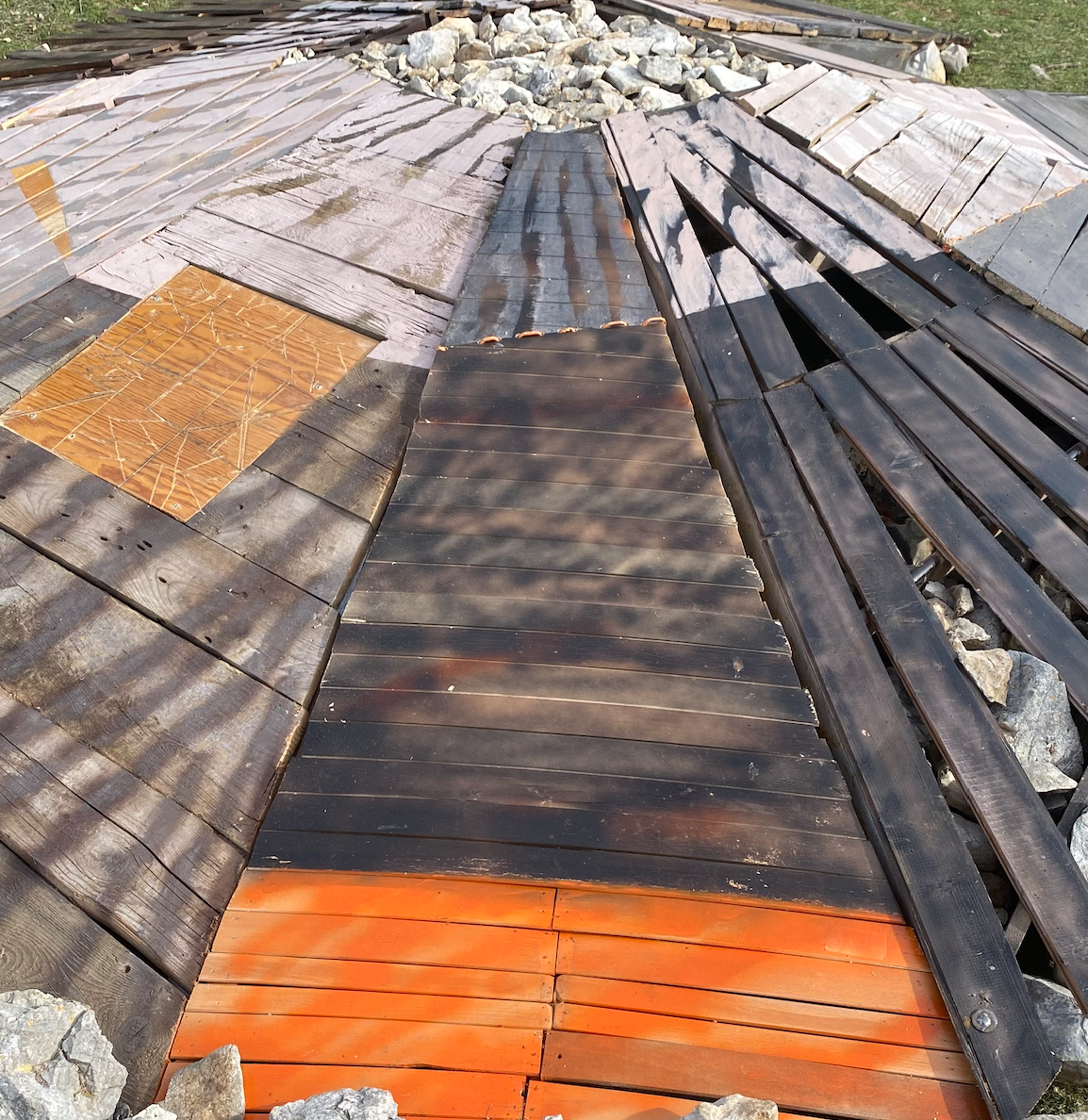ʻOpihi for Liliʻuokalani or Priljepak for Rab
Fruga Art Trail, Rab, Croatia 2024
Itʻs a platform in the shape of an ʻopihi or priljepak, something to do with the ʻopihi as a resilient and sticky creature, resistant against the waves and my flathead screwdriver.
The ʻOpihi is situated on the Croatian island of Rab, on a hillside on that receives the bura, the northerly katabaltic wind that can reach speeds of up to 200 km/h. With the help of stones and some 20 inch nails Tony made, the ʻOpihi is constantly trying to stick on to the landscape.
The thought stems from Queen Liliʻuokalani, the last reigning monarch of Hawaiʻi who’s lands were forcibly taken from her people by the United States. Liliʻuokalani’s father in law, John Dominis, happens to be from the island where this sculpture is located.
One one of the panels is an outline of the queen’s quilt, which she stitched while imprisoned in 1895 in Iʻolani Palace.
The ʻopihi also speaks generally to the local people of small islands like Rab, who need to be resilient against outside forces to hold on to their land, resources, and culture.

















